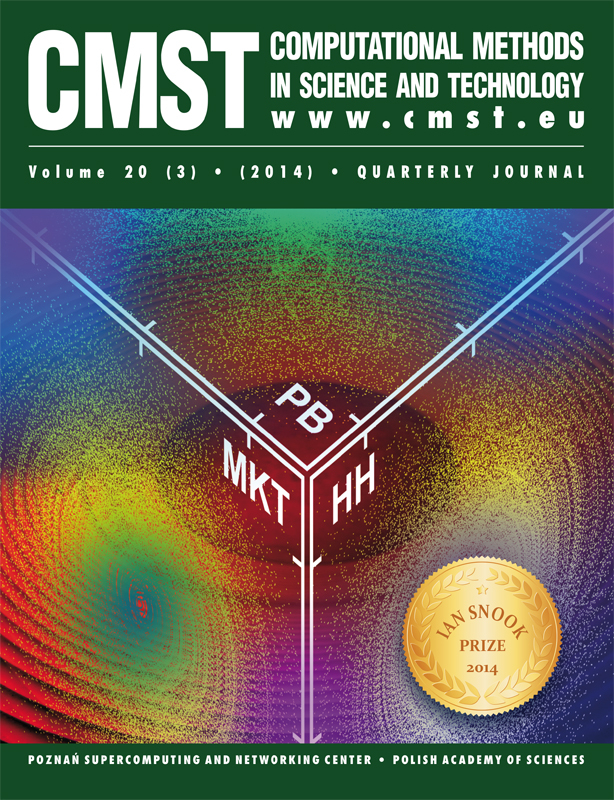Porta Optica – optical gateway to GÉANT2
Binczewski Artur, Przybylski Michał, Stroiński Maciej, Węglarz Jan
Poznań Supercomputing & Networking Centre, ul. Noskowskiego 12/14 Poznań, 61-704 Poland
e-mail: {artur|michalp|stroins|weglarz}@man.poznan.pl
DOI: 10.12921/cmst.2005.11.02.85-90
OAI: oai:lib.psnc.pl:594
Abstract:
Dark fibre networks are considered the key element of future research infrastructures. The ownership of fibre leads to the freedom of development, freedom of choice of technology and freedom of design for research networks, as well as virtually unlimited transmission capacity. This concept has been confirmed by the new design of the GÉANT2 [1] network, where majority of links will be based on dark fibre. At the same time, while the GÉANT2 network has been upgraded to a level of technology that allows multiple 10 Gbit/s connections between most of the GÉANT2 partners, many countries of Eastern Europe are still suffering from insufficient connectivity to the Internet. It is expected that a strong role in the development of pan-European research network can be played by so called “Cross Border Fibres” (CBF), owned and operated by NRENs. This paper provides an overview of the PIONIER infrastructure
and the Porta Optica initiative, which aims to improve the connectivity of Eastern European NRENs to GÉANT2, using a CBF infrastructure.
Key words:
Cross Border Fibres, Eastern Europe, GÉANT2, Porta Optica Study
References:
[1] GEANT2 website: http://www.geant2.net
[2] PIONIER website: http://www.pionier.gov.pl/eindex.html
[3] SERENATE website: http://www.serenate.org
[4] M. Bonac, J. Martin, SERENATE, Deliverable D16, Report identifying issues related to the geographic coverage of European research and education networking. http://www.serenate.org/publications/d16-serenate.pdf
[5] SEEREN website: http://www.seeren.org
[6] SEEFIRE website: http://www.seefire.org
[7] M. Nakonieczny, S. Starzak, M. Stroiński, J. Węglarz, Polish scientific broadband network: POL-34, Computer Networks and ISDN systems 30 (1998) 1669-1676.
[8] PIONIER: Polish Optical Internet – Advanced Applications, Services and Technologies for Information Society, September 2000, http://www.kbn.gov.pl/en/pionier/index.html
[9] A. Binczewski, N. Meyer, J. Nabrzyski, S. Starzak, M. Stroiński, J. Węglarz, First experiences with the Polish Optical Internet, Computer Networks 37 (2001) 747-759.
[10] A. Binczewski, M. Przybylski, M. Stroiński, Next Generation Network – a PIONIER example, TERENA Networking Conference 2003, Zagreb, 19-22.05.2003.
[11] N. Meyer, M. Stroiński, J. Węglarz, Optical Network for Euroregional co-operation, Proceedings of the Polish-German Symposium on Science Research Education, SRE 2000.
Dark fibre networks are considered the key element of future research infrastructures. The ownership of fibre leads to the freedom of development, freedom of choice of technology and freedom of design for research networks, as well as virtually unlimited transmission capacity. This concept has been confirmed by the new design of the GÉANT2 [1] network, where majority of links will be based on dark fibre. At the same time, while the GÉANT2 network has been upgraded to a level of technology that allows multiple 10 Gbit/s connections between most of the GÉANT2 partners, many countries of Eastern Europe are still suffering from insufficient connectivity to the Internet. It is expected that a strong role in the development of pan-European research network can be played by so called “Cross Border Fibres” (CBF), owned and operated by NRENs. This paper provides an overview of the PIONIER infrastructure
and the Porta Optica initiative, which aims to improve the connectivity of Eastern European NRENs to GÉANT2, using a CBF infrastructure.
Key words:
Cross Border Fibres, Eastern Europe, GÉANT2, Porta Optica Study
References:
[1] GEANT2 website: http://www.geant2.net
[2] PIONIER website: http://www.pionier.gov.pl/eindex.html
[3] SERENATE website: http://www.serenate.org
[4] M. Bonac, J. Martin, SERENATE, Deliverable D16, Report identifying issues related to the geographic coverage of European research and education networking. http://www.serenate.org/publications/d16-serenate.pdf
[5] SEEREN website: http://www.seeren.org
[6] SEEFIRE website: http://www.seefire.org
[7] M. Nakonieczny, S. Starzak, M. Stroiński, J. Węglarz, Polish scientific broadband network: POL-34, Computer Networks and ISDN systems 30 (1998) 1669-1676.
[8] PIONIER: Polish Optical Internet – Advanced Applications, Services and Technologies for Information Society, September 2000, http://www.kbn.gov.pl/en/pionier/index.html
[9] A. Binczewski, N. Meyer, J. Nabrzyski, S. Starzak, M. Stroiński, J. Węglarz, First experiences with the Polish Optical Internet, Computer Networks 37 (2001) 747-759.
[10] A. Binczewski, M. Przybylski, M. Stroiński, Next Generation Network – a PIONIER example, TERENA Networking Conference 2003, Zagreb, 19-22.05.2003.
[11] N. Meyer, M. Stroiński, J. Węglarz, Optical Network for Euroregional co-operation, Proceedings of the Polish-German Symposium on Science Research Education, SRE 2000.

